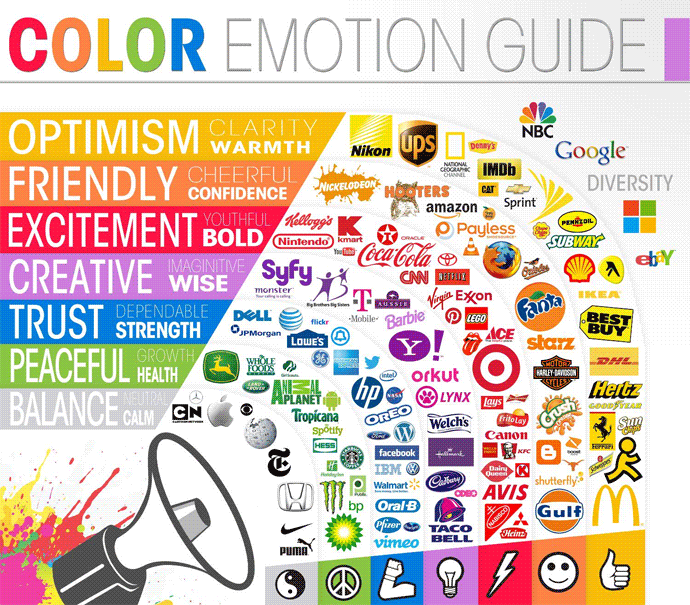When building a brand, there are many dimensions as to what defines that brand and makes it unique. A clever slogan, memorable icon, and even a catchy jingle are all components that contribute to a brand’s individuality, but what about color? Colors are more than just an emission of light reflected off of a surface. Color psychology deals with “the study of colors in relation to human behavior” and plays an important role to how your brand is perceived (Oberlo, Ferreira). Color can determine how consumers buy products and why they decided to choose those specific products. Colors help cultivate a strong, emotional connection and determines the decision making process for consumers.
So which emotions are associated with certain colors? Red is mostly associated with excitement, energy, action, and even danger and is known to be the most ‘intense’ color. Coca-Cola is a major brand that uses red as their main branding color and they’ve been nothing but successful thus far. Yellow evokes feeling of happiness, positivity and optimism and is a color that closely relates to summer. Brands like Ferrari and Ikea incorporate yellow into their logos, promoting a happy, optimistic lifestyle. Green is a color that is highly connected to nature and money. One major brand that not only incorporates green into their logo but into their equipment as well is John Deere. Consumers can easily relate a green tractor with John Deere, ultimately building brand awareness as well. Lastly, blue is said to evoke a calming sense, as it is the color of the sea and the sky. Stability, harmony, peace and trust are just some of the feelings your customer may feel about your brand when you integrate the color blue into your branding (Oberlo, Ferreira). Social sites like Facebook, Twitter and Skype incorporate blue into their marketing as well as wholesalers like Wal-Mart. Hospitals and clinics are also known to include the color blue in their image to influence trustworthiness into their brand.
Repetition goes a long way when incorporating colors into different aspects of your brand. For example: the logo, website, storefront, in-store design, staff uniforms and advertisements should all be connected to the main color of your brand. Best Buy is usually a blue building that has blue walls and each employee wears a blue polo. This not only strengthens your brand’s association with those colors, but also strengthens the brand’s awareness as a whole (99Designs, Ellis).
One important thing to remember, is that your brand’s color must correlate directly with the message you are trying to express as well as the emotions you are trying to provoke. Determining a brand’s personality traits will in turn help determine which customers to target, and the color theory will soon follow. Looking for a powerful, strong approach? Choose red as your main color scheme. Hoping to appear trustful and calm? Blue might be the right fit in that situation.
As previously mentioned, colors are more than just colors. They can determine the success of your brand, or the demolition of your brand. Color theory should definitely be taken into consideration not only when building a brand, but strengthening that brand as well.
Sources:
https://99designs.com/blog/tips/branding-colors/
https://www.helpscout.com/blog/psychology-of-color/
https://www.oberlo.com/blog/color-psychology-color-meanings

